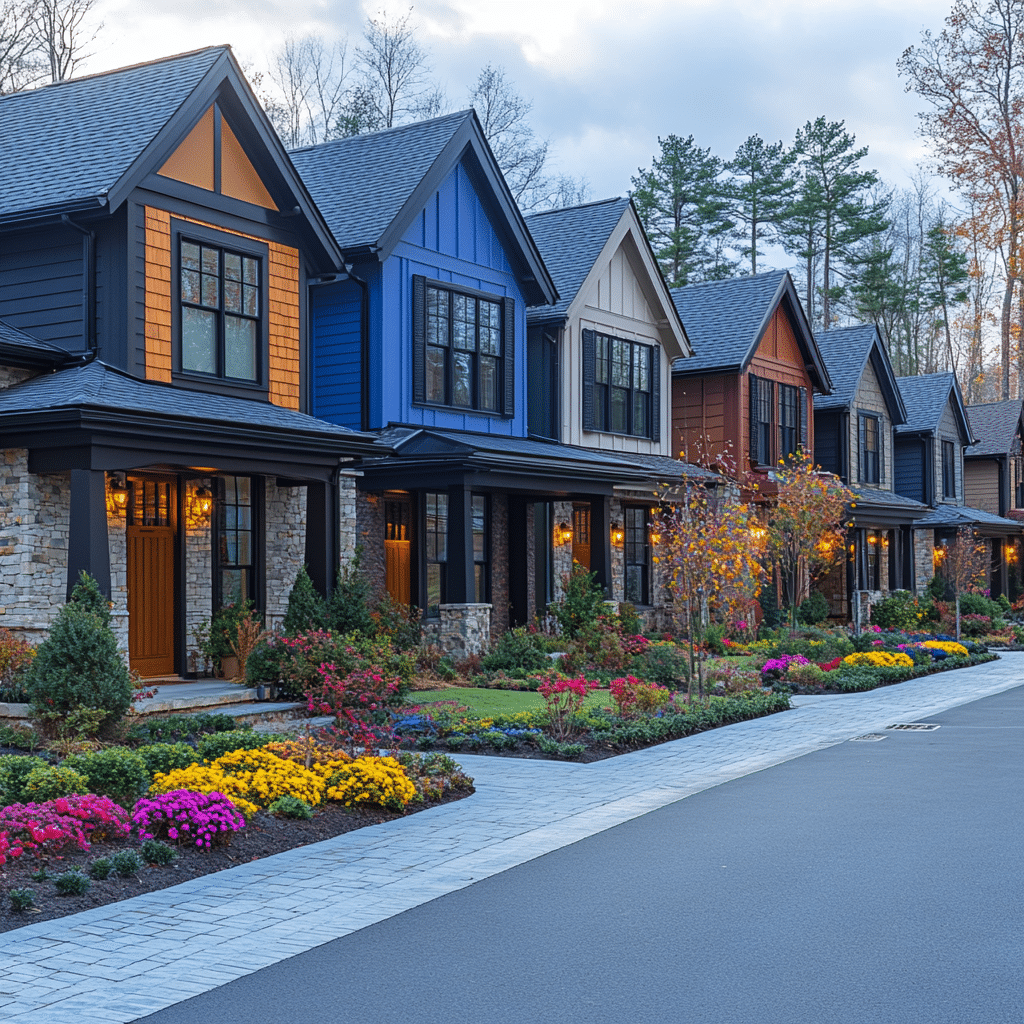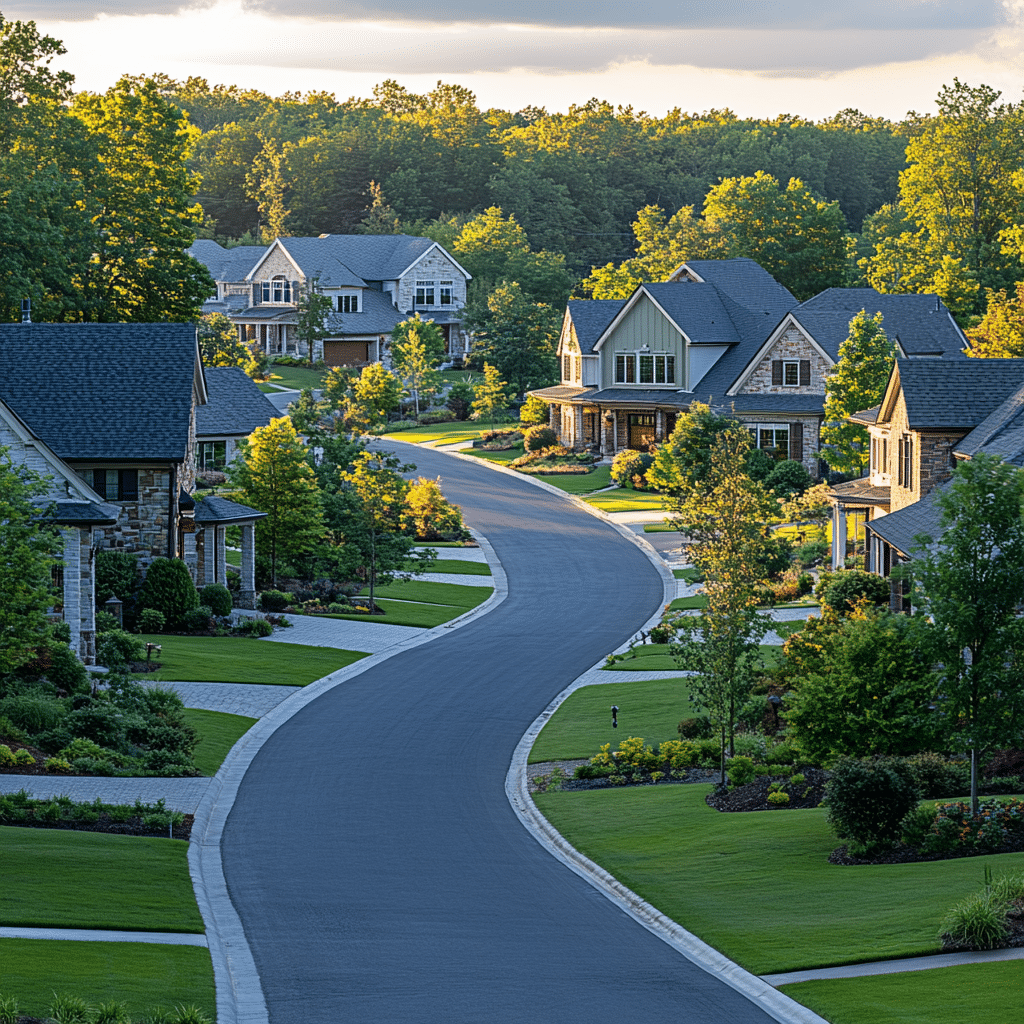Homeowners associations, often called HOAs, are quintessential in managing residential communities. They’re not just about maintaining common areas; these entities ensure the stability of property values while boosting communal living experiences. HOAs oversee a diverse range of properties, including condominiums, single-family homes, and townhomes. As we dive into 2024, understanding how HOAs function and their benefits can help homeowners and potential buyers make informed decisions.

The Role of Homeowners Associations in Community Management
Homeowners associations embody the organizational backbone of many neighborhoods. Their primary duties revolve around maintaining communal amenities, enforcing architectural guidelines, and ensuring community standards are met. These associations champion the upkeep of shared facilities such as parks, swimming pools, and clubhouses, which enhance the quality of life for residents.
HOAs also play a pivotal role in enforcing rules. They establish and oversee the adherence to community guidelines, which range from architectural designs to common area usage. This consistency helps maintain the aesthetic appeal and uniformity across neighborhoods, directly impacting property values.

Top 7 Secrets of Successful HOA Management
Success isn’t a matter of chance for homeowners associations. It requires strategic planning, transparency, and active community engagement. Here are seven insider secrets to effective HOA management:
1. Transparent Financial Operations and Budgeting
A hallmark of a well-managed HOA is financial transparency. For instance, Reston Association in Virginia exemplifies sound financial management by making budgetary decisions accessible to all residents. They share detailed annual expense reports, which foster trust and diminish the risks of mismanagement. Transparency ensures that every dollar is accounted for, increasing residents’ confidence in their HOA.
2. Enforcing Community Guidelines Fairly and Consistently
Consistent enforcement of guidelines is crucial. Take Anthem Community Council in Arizona, for example. They enforce community rules uniformly, avoiding any perception of favoritism. This approach helps maintain harmony and ensures that community standards are upheld, preserving the neighborhood’s appeal.
3. Encouraging Resident Participation and Feedback
Active resident participation can transform an HOA. Neighborhoods like Battery Park City Authority in New York regularly hold town halls and feedback sessions. This practice makes residents feel included and valued, ultimately fostering a stronger sense of community. Residents’ input in decision-making processes enhances transparency and trust.
4. Investing in Community Facilities and Amenities
Investments in community facilities pay dividends. The Woodlands Township in Texas is a prime example. With amenities ranging from parks and golf courses to recreational centers, these investments significantly boost property values and residents’ satisfaction. High-quality infrastructure enhances the communal living experience, making the neighborhood more desirable.
5. Utilizing Technology for Effective Communication
Embracing technology can streamline HOA operations. Miami’s Coconut Grove Village Council uses neighborhood-specific apps and email newsletters to keep residents informed and engaged. This tech-savvy approach ensures timely updates and facilitates seamless communication, enhancing overall community interaction.
6. Implementing Sustainable Practices
Sustainability is becoming a priority for many HOAs. The Greenbelt Alliance in California focuses on eco-friendly initiatives like incorporating green spaces and promoting recycling programs. These practices not only benefit the environment but also attract like-minded, eco-conscious residents, boosting community appeal.
7. Crisis Management and Emergency Preparedness
Effective crisis management is critical. Communities such as Palmer Ranch in Sarasota have robust emergency preparedness plans to handle natural disasters and other crises. Regular drills and clear communication pathways ensure residents are well-prepared, protecting the safety and well-being of the community.
| Category | Details |
| Definition | A private association formed by a real estate developer to manage a community of homes or condos. |
| Purpose | To uphold community standards, maintain common areas, and enforce covenants, conditions, and restrictions (CC&Rs). |
| Fees | Typically range from $200 to $400 per month, but can vary significantly depending on community and services offered. |
| Common Services | Landscaping, garbage collection, street maintenance, snow removal, and security services. |
| Benefits | Enhanced neighborhood appearance, access to shared amenities, increased property values, and dispute resolution. |
| Drawbacks | Mandatory fees, restrictions on property use, potential for mismanagement, and reduced autonomy for homeowners. |
| Board Composition | Generally composed of volunteer homeowners elected by other residents. |
| Decision-Making Process | Board meetings, often held monthly or quarterly, where decisions and changes are voted on by board members. |
| Enforcement Mechanisms | Fines, liens on property, or legal action for non-compliance with rules and regulations. |
| Dispute Resolution | Internal mediation, third-party mediation, or litigation if disputes escalate. |
| Governing Documents | Articles of Incorporation, Bylaws, CC&Rs, and Rules & Regulations. |
| Annual Budget | Budget varies based on services and maintenance needs; determined by board members and may require homeowner approval. |
| Insurance Requirements | HOAs usually carry insurance for common areas; homeowners may need individual policies for their units. |
| Special Assessments | Additional charges levied on homeowners for unforeseen expenses or major repairs that exceed the budget. |
| Amenities | Swimming pools, clubhouses, tennis courts, parks, and walking trails, depending on the community. |
Benefits of Joining a Homeowner Association
Joining an HOA comes with several benefits that can elevate property values and enhance living standards. Let’s explore the key advantages:
Enhanced Property Values
HOAs help maintain and even increase property values. For example, the Irvine Company in California shows a strong correlation between a well-kept community and high property values. By enforcing standards and investing in community improvements, HOAs directly contribute to the rise in property market valuation.
Access to Shared Amenities and Services
One of the most attractive benefits of joining an HOA is access to shared amenities. Consider the Lakewood Ranch Community Development District in Florida, which offers facilities like pools, fitness centers, and event spaces. These amenities would be financially unviable for individual homeowners but become possible with collective contribution through an HOA.
Consistent Community Standards
Maintaining community standards is another perk of HOAs. The Stonegate Community Association in Colorado Springs ensures uniformity in aesthetics and property maintenance. This prevents unsightly properties and keeps neighborhoods visually pleasant, benefiting all residents and sustaining property values.
Conflict Resolution and Mediation
HOAs often mediate disputes among residents, promoting harmony. For instance, The Villages in Florida deploy effective conflict resolution strategies to handle resident disputes. They provide a neutral ground for resolutions, maintaining a peaceful and cooperative community.
HOA Challenges and Solutions: Real-World Insights
While HOAs offer numerous benefits, they also face challenges that require adept handling. Here’s how some associations successfully tackle these issues:
Balancing Authority and Resident Freedom
Striking a balance between regulation and freedom can be tricky. Communities like Scottsdale Ranch in Arizona address this by involving residents in rule-making processes. This inclusive approach ensures that the rules are fair and resonate with the community’s aspirations, fostering a sense of ownership among residents.
Tackling Financial Mismanagement
Financial mismanagement is a concern for some HOAs. Entities like Sanibel Island in Florida mitigate this by conducting third-party audits and regular financial reviews. This ensures accountability and prevents financial misconduct, bolstering residents’ confidence in their HOA.
Navigating Legal Hurdles
Legal challenges are another concern for HOAs. The Celebration Residential Owners Association in Florida stays proactive by regularly updating their bylaws to comply with state regulations. They involve legal experts to preemptively address potential issues, safeguarding the association and its residents from legal pitfalls.
The Future of HOAs: Trends to Watch in 2024 and Beyond
As we progress into 2024, several trends will shape the future of homeowners associations, pushing them towards greater efficiency and resident satisfaction:
Integration of Smart Technology
The integration of smart home technology into HOAs is on the rise. Communities like Laguna Woods Village in California are incorporating IoT (Internet of Things) for enhanced security and energy efficiency. These advancements make neighborhoods more desirable and ensure better living standards.
Emphasis on Mental Health and Wellness
Mental health and wellness will become a focal point for many HOAs. Associations such as Fairfax County’s Mosaic District are leading the way by initiating wellness programs and promoting activities that foster emotional well-being. This holistic approach to resident health improves community satisfaction and cohesion.
Evolving Community Expectations and Digital Transformation
Young homeowners are driving the digital transformation of HOAs. Tech-savvy communities like Silicon Valley’s Santana Row are setting the bar high. Future HOAs are expected to be more responsive and innovative, utilizing technology to meet the evolving expectations of residents and improve overall management.
Embracing the Potential of Homeowners Associations
Homeowners associations play a crucial role in maintaining communal harmony, enhancing property values, and offering shared amenities. The secrets to successful management, paired with the benefits of belonging to an HOA, make these associations indispensable for many residential communities. By harnessing these insights, residents and homebuyers can appreciate the full potential of HOAs in enriching their living experience.
Visit Mortgage Rater to explore how you can navigate the mortgage landscape and understand Underwriting, calculate your Debt-to-income Ratio, and learn about other essential aspects like Title Insurance and finding the right Private Lender Mortgage. Let Mortgage Rater guide you through leveraging the benefits of homeowners associations and enhancing your financial well-being.
Homeowners Associations Secrets and Benefits
Fun Trivia
Did you know that homeowners associations (HOAs) have been around since the 19th century? Back then, they were mostly found in fancy neighborhoods, but now they’re virtually everywhere! With over 350,000 HOAs in the United States, it’s no wonder they impact so many people’s lives. Ever wonder how an HOA might affect your finances? Well, a good standing with your HOA can potentially positively influence What Is The average credit score of residents in the neighborhood.
Interesting Facts
Here’s a quirky tidbit: some HOAs are so strict that they can dictate the color of your home’s front door! While it might sound overbearing, these kind of rules are designed to maintain property values and keep uniformity. Plus, having a tidy, well-kept neighborhood could possibly help with your debt To income ratio when applying for loans. Unexpected, right?
Moving to California and looking for housing? If you’re considering an HOA community, you might find that working with a portfolio lender california offers flexibility in mortgage products. These lenders service multiple properties under a single umbrella, sometimes making home and community living much more streamlined. Now, that’s a handy approach for prospective homeowners!




